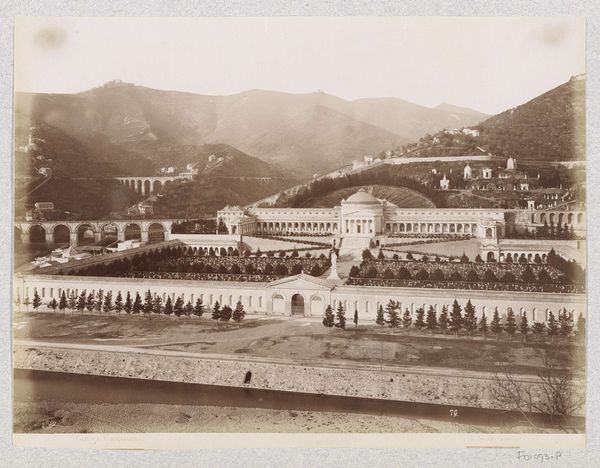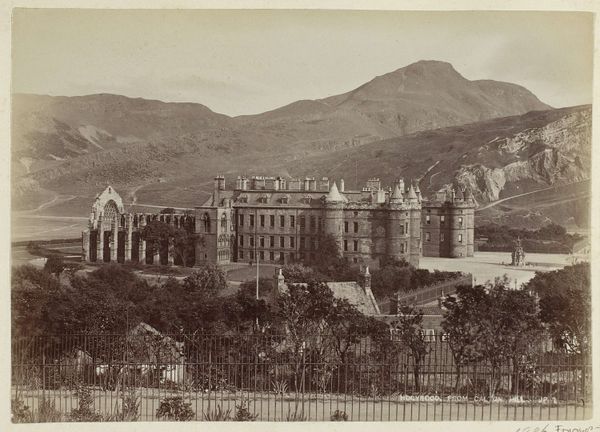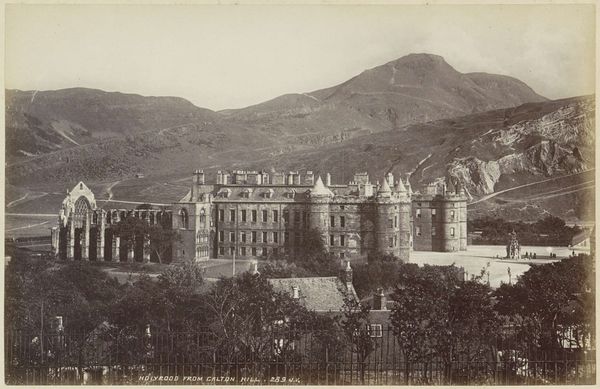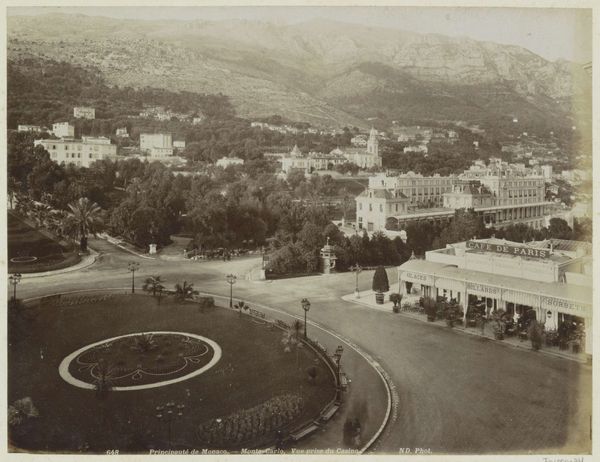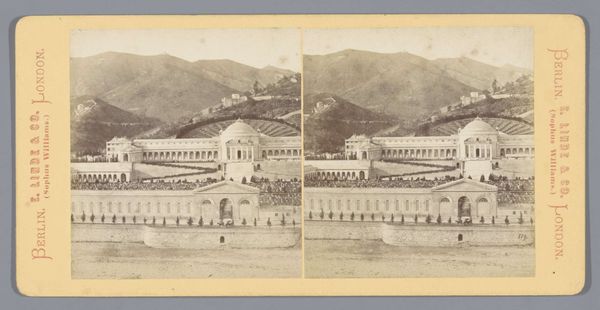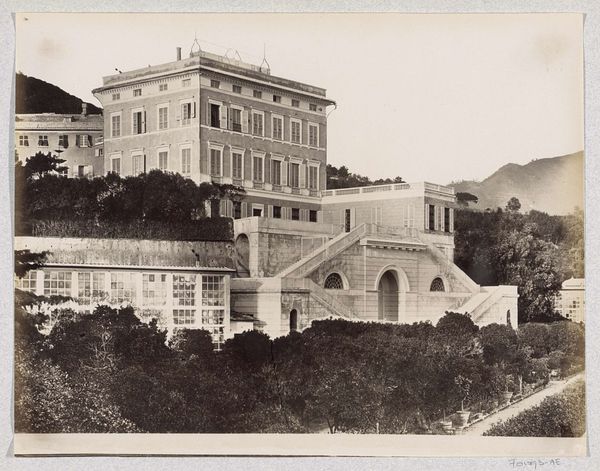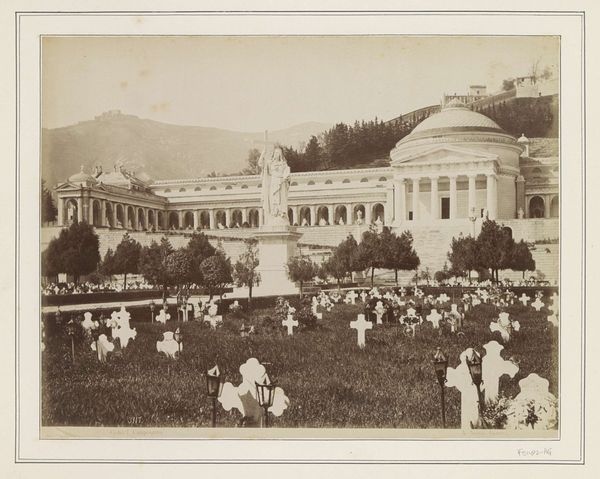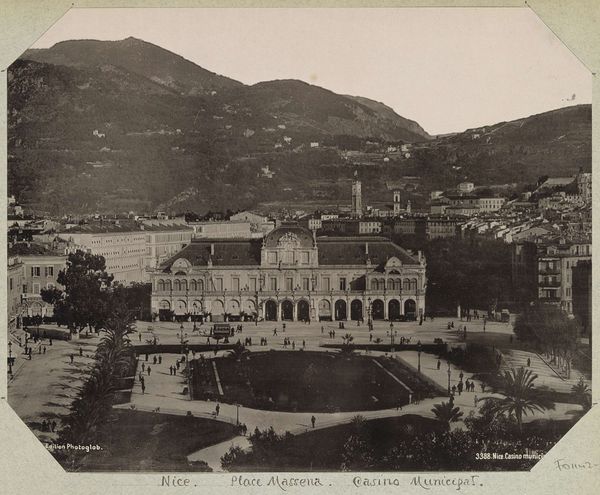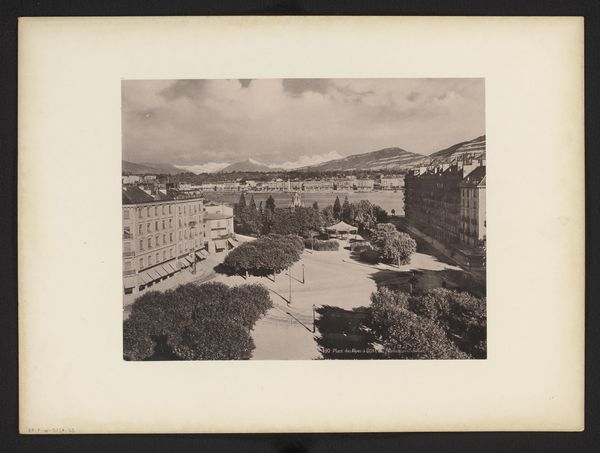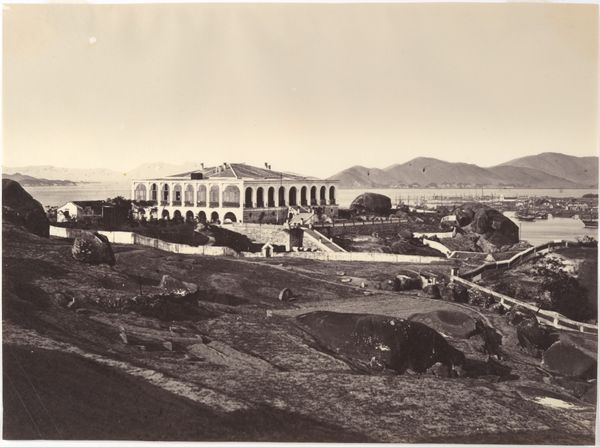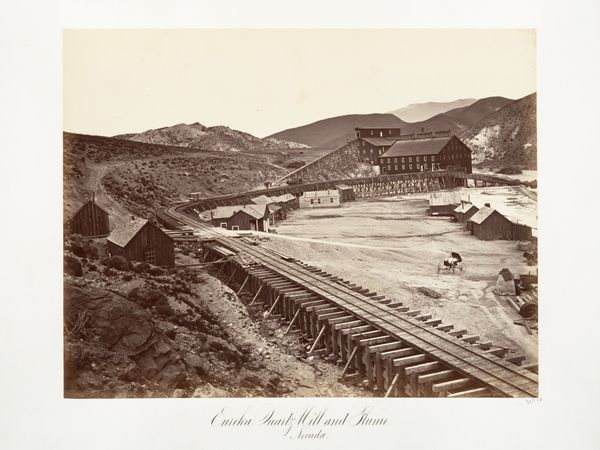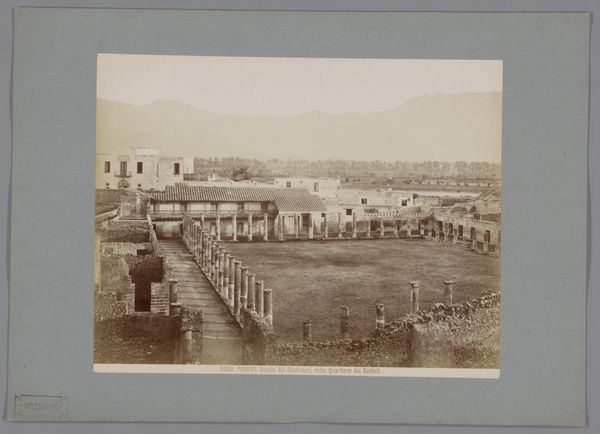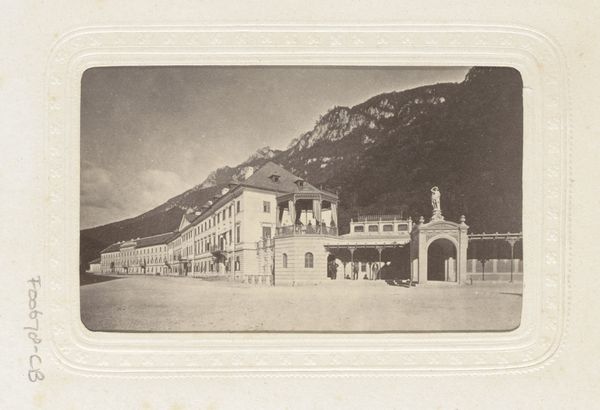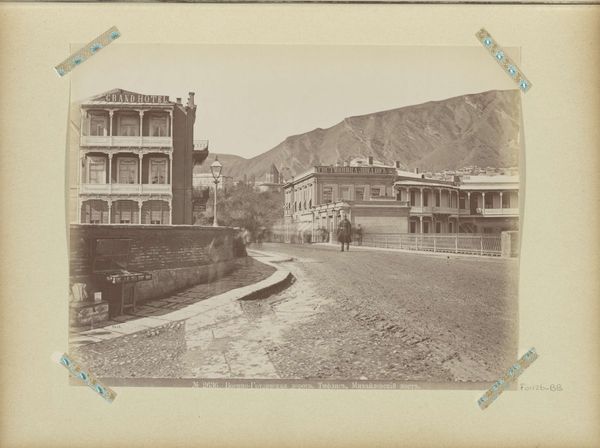
photography, albumen-print
#
landscape
#
archive photography
#
photography
#
romanesque
#
historical photography
#
19th century
#
cityscape
#
albumen-print
Dimensions: height 213 mm, width 280 mm
Copyright: Rijks Museum: Open Domain
Editor: This albumen print, taken by Alfredo Noack before 1894, is titled "Begraafplaats Staglieno te Genua" or Staglieno Cemetery in Genoa. It's quite striking, almost like a miniature city nestled into the hillside. What narratives or symbols jump out at you? Curator: The image immediately resonates with ideas of memory and remembrance, doesn't it? This necropolis, designed with Romanesque influences, isn't just a burial ground; it's a symbolic city of the dead mirroring the life of the living. Do you notice how the architecture, the colonnades, the central domed structure, all echo classical ideals? Editor: Yes, now that you mention it, the composition really does lend itself to seeing it as an earthly city and a heavenly domain all at once! It’s designed for the living as well as the dead, and seems as much park or garden as cemetery. Curator: Precisely. And within those visual echoes lies a continuity – a cultural memory deliberately preserved through symbols. The landscape surrounding it—the mountains, the trees—also speaks volumes about the cyclical nature of life and death, immortality. Think about what kind of statement it makes when death is integrated with the aesthetics of life rather than set apart as something to fear. Do the memorials within the necropolis look alike? Editor: Not from what I can tell. I think they’re unique… So it’s not just a cemetery, but a record of individual lives, families and cultural values? Curator: Absolutely. Photography in this era served to solidify memory. This photo immortalizes the necropolis but also asks viewers to consider the role of symbolism and architecture in facing mortality. Every detail echoes beliefs about life, death, and the afterlife. It encourages us to think about how societies commemorate their dead. Editor: That makes so much sense. It’s more than just a picture of a cemetery, it's about how we deal with loss, how we immortalize people and values. Thanks! Curator: It really shows the continuity of architectural, and symbolic languages, doesn't it?
Comments
No comments
Be the first to comment and join the conversation on the ultimate creative platform.
